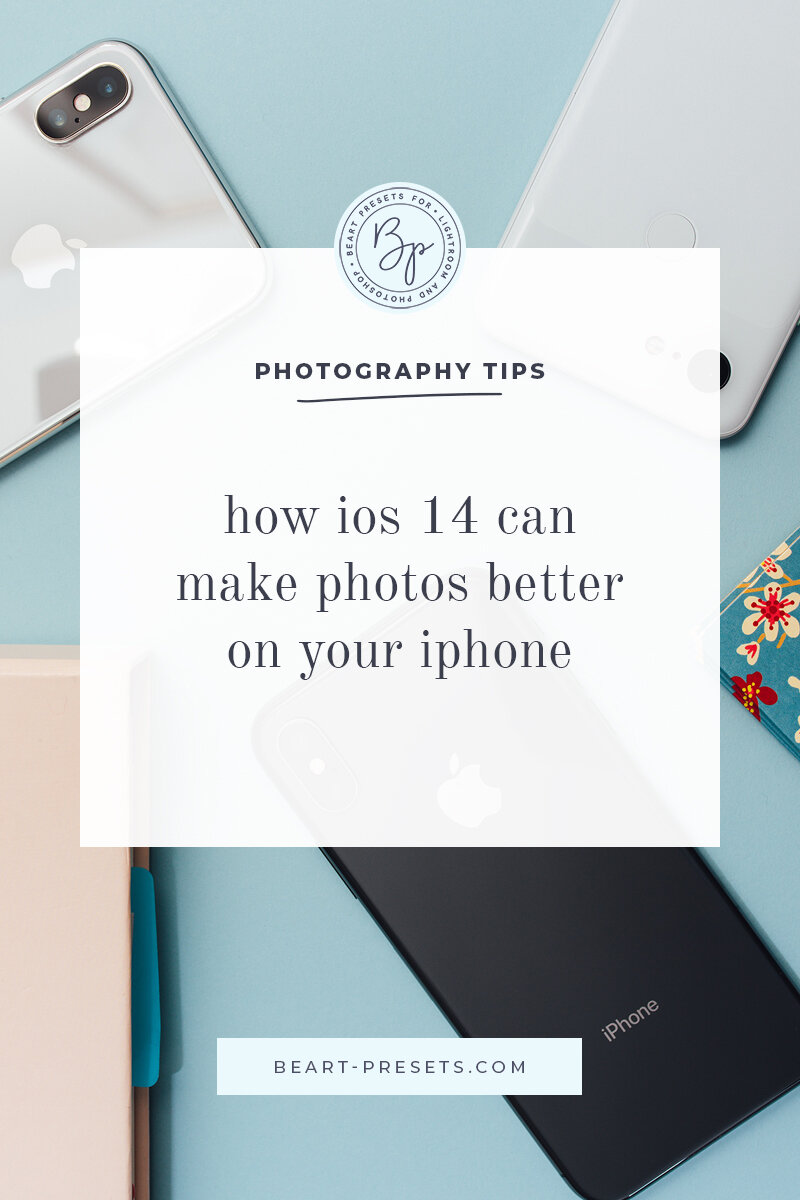How iOS 14 Can make Photos better on Your iPhone
If you've updated your iPhone to the most recent iOS 14.0.1 update, you've noticed some significant changes. These include changes to or within the home screen, default browser, mail apps, and new widgets. There are also improvements to the camera app. Let's take a closer look.
How old is your phone
The newer your phone, the bigger the upgrades within the updates. Sorry to those of us with older phones! Apple says its camera app is 90-percent faster with the ability to capture four shots per second. If you have an iPhone 11, the camera improvements mean a 25-percent, quicker cold shot. Portrait shooting improved by 15-percent.
So, what if you have an older phone? Well, most of these nice improvements are limited to newer devices like the iPhone 11 (and 11 Pro), XR, and XS. There seems to be little improvement with the camera app on the iPhone X or older. (That doesn't mean that it isn't still a good camera.)
Let's take a look at some of the upgrades you can expect.
New Camera Settings Menu
To change camera settings, you tap on the small icons at the top of the screen. On the iPhones XR, XS, or later, iOS 14 has now moved the setting icons to a single menu alongside the new Exposure Compensation controls. Access these by tapping the downward-facing arrow at the top of the screen.
Mirrored Selfies
Finally, on the XS, XR, and later iPhones, a mirrored selfie is now available. If you'd like to save an identical (mirrored) version of a selfie in the viewfinder, toggle-On the "Mirror Front Camera" under Settings > Camera.
Exposure Compensation Slider
If you've ever tried to lock the focus and exposure on an iPhone, you've likely struggled. It should be easy, but it's not. While holding the iPhone steady, you have to tap and hold the area you want to focus on and move the slider up or down to increase or decrease the amount of light in the scene. It's an unwieldy exercise.
However, the new iOS 14 improvements to the Camera app make it much easier to handle the exposure. You can now fine-tune exposure and adjust how much light is in a scene without driving yourself crazy. Here's how:
Open the Camera app and tap the upward-facing arrow at the top of the screen.
Tap the Plus/Minus sign (+/-) icon in the menu that appears to reveal the Exposure Compensation dial.
Slide left or right on the dial to increase or decrease the amount of light in your scene.
To adjust the focus, without losing your exposure settings, tap anywhere on-screen.
A few things additional things about the exposure:
The iPhone will remember an exposure value you set until the next time you open the Camera app.
When you're using the Exposure Compensation, the light meter at the top-left indicates the exposure. If the meter leans to the left, it's underexposed. If it's to the right, it's overexposed.
Note that the Exposure Compensation isn't fully manual, and it only fine-tunes the current scene.
You can lock exposure by tapping and holding the Viewfinder; otherwise, the app continues to adapt to the lighting conditions.
Faster Shooting
The iPhones XS, XR, 11, and 11 Pro can enjoy faster burst shooting. As you know, burst mode is the fastest way to capture images. In iOS 13, you tap and hold the Shutter button, which processes each image after shooting it, resulting in a slight delay. With the new iOS 14 update, you can quickly take photos by repeatedly tapping the Shutter button. To enable this:
Go to Settings > Camera,
Toggle-On Prioritize Faster Shooting
Note that your iPhone will now prioritize speed over image quality because it reduces the amount of processing performed on each shot.
Night Mode
If you own an iPhone 11, you'll see an improvement to Night mode, although, for best results, you'll want to use a tripod. It's easier to keep your device steady while shooting, giving you a sharper image. Use the two on-screen crosshairs, keeping them aligned, for the best picture.
QuickTake for iPhone XR and XS
iOS 14 added QuickTake to the iPhone XR and XS. It was previously only available to the iPhone 11 or better. If you're not familiar with it, QuickTake allows you to start quickly shooting a video, even when your camera is the default Photo mode. This means you save you a lot of time by not having to switch from photo to video.
To activate QuickTake:
Launch the Camera app.
Press and hold the Volume Up or Shutter button.
Lock recording by pressing and holding the Shutter button and swiping right.
Burst Instead of QuickTake
Apple added another nifty feature with the iOS 14 for XR, XS, and later devices. It is the option to activate QuickTake or Burst when you press and hold the Volume Up button — by default, pressing the Volume Up button while in the Camera app starts a QuickTake video. On older devices, the Volume Up button shoots a regular photo.
To enable Burst:
Toggle-On the "Use Volume Up for Burst" option under Settings > Camera
To start a QuickTake video:
Press and hold the Volume Down button.
The iOS 14 and the New iPhone
Usually, Apple releases a new phone (in this case, it would be the successor to the iPhone 11), followed by an update. However, they have delayed the new iPhone release until sometime in October and have instead released the update first. Hopefully, Apple will release the new phone shortly.
We look forward to exploring new features. Stay tuned for our review.


















